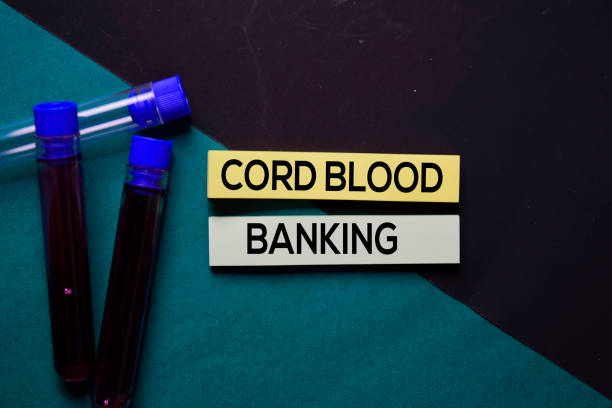Many may not know that cord blood stem cells has a lot of significance in saving our lives. The umbilical blood is full of valuable stem cells that can be of excellent health value in the future for your baby. The trend of storing cord blood stem cells is not very old, and, presently, it’s on the rise around the globe. The process is known as “umbilical cord blood banking”. Read out to know the truth behind cord blood stem cells storage If you are thinking to opt for it, here’s a short guide:
CORD BLOOD STEM CELLS STORAGE:
It is a process of collecting active life-saving stem cells from the umbilical cord of a newborn baby to be used in the future. This process is most beneficial when these stem cells are used for infant siblings. In most cases, the cord blood stem cells are utilized when any sibling has some fatal disease.
Over the years, the common practice was to throw the umbilical cord away, but now doctors try to save it to keep stem cells and blood from it.
COLLECTION OF CORD BLOOD STEM CELLS:
Right after birth, the baby’s umbilical cord is clamped at two places, each at 10 inches apart. After connecting, the doctor cuts off the cord to separate the baby from the mother and collects the blood from it. After the collection, the blood is sealed in an airtight bag and sent to a blood-testing lab for storage and further testing. The tests confirm whether the blood is free of any infectious diseases. The mother’s blood is collected as part of the procedure.
The procedure is painless for both baby and mother, but it takes a few minutes to clamp and cut the chord.
STORAGE:
Public Blood Banks: These public storage banks do not charge money to store them. In case of any need, donation is readily available for anyone. These banks are non-profitable organizations that use cord blood primarily for carrying out research.
Commercial Blood Banks: These commercial banks donate cord blood to only the donor’s family members. These banks are expensive, and usually, they charge a lot. These commercial cord banks also charge registration fees. Private Banks in the USA charge from $1400 to $2300 to collect, test, and register cord stem cells. Besides these changes, they also charge an additional $100 annually as a storage fee.
Direct- Donation Banks: These storage banks are a mixture of public and private banks. These banks store cord blood for public use. Besides this, they also accept donations from families so that specific family members can use this cord blood. These banks don’t charge any fees.
BENEFITS OF CORD BLOOD BANKING:
Many types of research have shown numerous benefits of blood stem cell banking. Research has proved that these stem cells are highly effective in treating many neurological disorders that may occur in the future. You must be wondering how storing cord blood can be beneficial. Here is how:
- Treats autism and cerebral palsy.
- Several autoimmune disorders like Crohn’s disease and type 1 diabetes.
- Cardiovascular conditions like myocardial infarction and cardiomyopathy.
- Gene therapy for the treatment of inherited disorders, e.g. HIV.
- Several orthopaedic conditions, such as knee cartilage repair.
The stem cells from the umbilical cord are naturally loaded with uncountable benefits. These stem cells are used to treat cancer, anaemia, and immune system disorders that affect the body’s defence system. The fluid from the umbilical cord is easy to collect and store. The umbilical cord has ten times more stem cells than bone marrow. When injected, these cells rarely catch any infection and can be readily accepted by anybody.
LIMITATIONS OF CORD BLOOD STEM CELLS BANKING:
A few limitations of the procedure are:
- One collection might not be enough to treat an adult.
- No other cells can be harvested from the source once they are transplanted.
- Bone marrow cells require less time to transplant than cord blood stem cells.
- There is no proper system of collection and storage of donated cord blood stem cells in many countries worldwide.
WHY STORING CORD BLOOD CELLS ISN’T RECOMMENDED?
Few doctors do not recommend storing cord blood cells as common practice as nobody knows what the future holds. As of now, more research is needed to provide further clarity. Numerous international bodies such as the American Academy of Pediatricians, the American Society for Blood and Marrow Transplant, the American College of Obstetrics and Gynecology, the American Medical Association, the European Group on Ethics in Science and New Technologies etc. too do not recommend private banking for future self-use.
If you want to store these stem cells thinking that they might benefit your baby someday in case of an illness, you need to think twice. If your baby needs stem cells, he will need them from someone else, not his own. Also, your baby’s stored stem cells might help a sibling with a severe disease that can only be treated with a stem cell transplant, such as; leukaemia, Hodgkin’s lymphoma, thalassemia, and sickle cell anaemia. Storing cord blood can be beneficial only if you consider donating it to public banks or for research purposes.
CONTROVERSY OVER STORAGE OF STEM CELLS IN PRIVATE BANKS:
Public and private banks provide almost similar services, but their methods and standards can differ. In the US, The FDA has restricted public banks to follow strict rules and regulations to handle cord blood stem cells. While in India it is allowed only under license and monitoring by the Central Drug Standards Controlling Organization (CDSCO). The Cord Blood Banks must comply with the Drugs and Cosmetics (3rd Amendment) Rules, Gazette Notification No. GSR 899(E) dated 27/12/2011 for collection, processing, testing, storage, banking, and release of stored units.
Public banks should meet a high standard of sterility, and they must be careful to keep this blood free from any contamination or disease. They have to ensure that this blood has the minimum number of cells before storing it.
On the other hand, private banks do not meet these standards. They do not always maintain the same quality and standards. Generally, they impose a lower number of cells. It means that there is no proper guarantee that private banks will have the blood that contains enough stem cells for a successful transplant. A study in 2010 showed that private banks do not meet the FDA’s approved criteria for storing stem cells compared to public banks.
Another recent controversy showed that public banks are non-profitable banks, whereas private banks charge hefty fees.




